
Who is Final Fantasy XVI Creative Director Kazutoyo Maehiro? | Developer Profile
Video game developers are usually renowned for one specialty, with their fame stemming from work in areas such as scenario writing, concept art, or battle system design. Others, however, are so versatile that it is almost impossible to grasp the scope of their skills. This is great news for Final Fantasy XVI - as one such developer is in a key role on the project.
Kazutoyo Maehiro certainly lies within the second category. Although it is possible to define him as a “planner”, the Japanese equivalent to what Western studios call game designers, we would be overlooking the impressive diversity of his more than 25-year career at Square Enix, from creating the levels of Vagrant Story to writing the scenario for Final Fantasy XIV’s reboot, or designing Final Fantasy XII’s battle system — not forgetting his gift for pixel art.
A longstanding player, fascinated with dark fantasy settings and old Western role-playing games such as the Wizardry series, Maehiro is now Final Fantasy XVI’s creative director and original scenario writer. This makes him the game’s third mastermind, alongside producer Naoki Yoshida and main director Hiroshi Takai — a trio that has been joining forces for more than a decade already. In FF16, this trifecta finally gets the chance to express ideas and ambitions all of their own.
As when we previously looked at other Final Fantasy XVI development staff, looking at the past can help us to decipher the future. By examining Maehiro's career, we can gain a clearer image of the sort of creative direction he is likely to give FF16. So, let's start at the beginning.
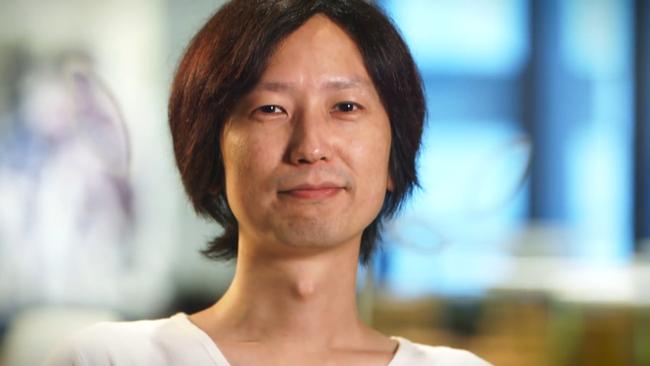
Kazutoyo Maehiro joined Square in the middle of the 1990s, at a time the company was actively looking for fresh recruits to bolster its growth. The corporate culture was then centered around the spirit of initiative, which extended to newcomers. Instead of supporting veteran developers on flagships, they were entrusted with minor titles for on-the-job training.
Maehiro made his first steps in 1995 as an assistant planner on DynamiTracer, a narrative game for the Satellaview - a satellite modem peripheral for the Super Nintendo. Under the director Hiroki Chiba (Chrono Trigger), he worked with two other young talents, Jun Akiyama and Takayuki Suguro, whom he would meet again on a few future projects, starting with Final Fantasy Tactics — a career-changing project.
The Tactical Advantage
While the development of Final Fantasy VI was in full swing, series creator and then-boss Hironobu Sakaguchi cultivated the idea of creating a spin-off title for the series that would use a tactical game system. The project, however, wouldn’t start until late 1995, when a fresh recruit called Yasumi Matsuno volunteered to direct it.
To Matsuno, FFT represented a golden opportunity. He had developed Tactics Ogre: Let Us Cling Together at developer Quest prior to joining Square, and so he knew the genre well. Bringing some of his colleagues with him, among which are artist Akihiko Yoshida & graphic designer Hiroshi Minagawa, and receiving the support of game designer Hiroyuki Ito (best known for creating Final Fantasy IV’s Active Time Battle system), Matsuno went on to create Final Fantasy Tactics.
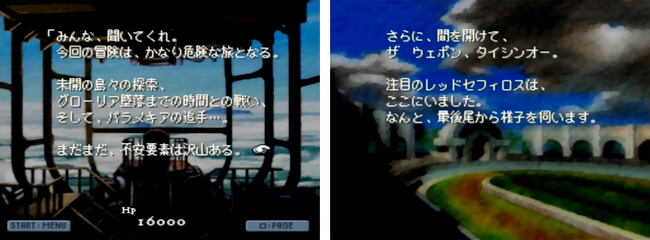
While Kazutoyo Maehiro found his place in the newly assembled team, his main contribution to the game is actually unknown to many players outside of Japan, and for a good reason: it was absent from the Western release! The original Japanese game features four text-based minigames that can be unlocked by acquiring certain artifacts during sidequests. Following the typically Japanese “sound novel” genre and loosely reminiscent of choose-your-own-adventure books, they each tell a unique tale, completely independent from Tactics’ main storyline.
Maehiro directed and designed the four of them, and contributed to the making of their static background pictures. He did also write two of them: “Nanai’s Histories” and “Mesa’s Musings” (or “Fantasy Magi-ence Story”, as mentioned in the minigame itself). The two others, “Enavia Chronicles” and “Oeilvert” (incorrectly translated as “Wyuvle” and “Veil of Wiyu” in the English versions), were penned by Nobuyuki Inoue. Yasumi Matsuno planned to write a few stories of his own, before giving up for lack of time.
Unfortunately, these sound novels were also missing from the Western releases of Tactics’ PSP port, The War of the Lions (2007). The only way to know about these mysterious additions is to read the unofficial English translation of three of them, provided by Mark Rosa.

A few years later, in 2002, Square finally reconnected with Nintendo after a long break-up and decided to give Final Fantasy Tactics a sequel of sorts for Game Boy Advance, resulting in the aptly named Final Fantasy Tactics Advance. While he was concurrently working on Final Fantasy XII, as we will see later on, Kazutoyo Maehiro was appointed quest planner alongside Shutaro Yokoyama.
He specifically directed the game’s clan missions, which he envisioned as an expansion of Tactics’ errands. It is therefore unsurprising that, when asked by the official website about the job he would like to hold if he was living in Ivalice, Maehiro answered: “I’d like to be a tavernmaster, so I could talk about anything and everything with clan members.”
"Nasty" and "Difficult" as a Compliment
Following the successful launch of Final Fantasy Tactics, Square’s management gave carte blanche to Yasumi Matsuno. While Hironobu Sakaguchi was happy to finally boast a tactical game in his catalog and was keen on setting a sequel going, Matsuno and his team opted for a completely new title: Vagrant Story. This, however, would not stop a true Final Fantasy Tactics 2 project from starting under Sakaguchi’s care, with the idea being to entrust an external partner with its development. But, too busy with his own Hawaiian endeavors (namely Final Fantasy IX and the Final Fantasy movie), he asked Matsuno to take over the game’s supervision... until it was eventually canceled.
As such, the coast was clear for what would become one of Square’s gems from the PlayStation era. Like many others, Vagrant Story’s designers were so impressed by Metal Gear Solid’s cinematic experience that they, too, sought to push the limits of 3D graphics on the hardware. As the next generation of consoles was right around the corner, this technology was well on its way to becoming unavoidable, and it was time they got their hands dirty.
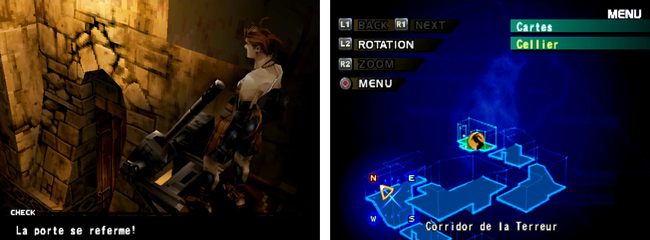
Now a prominent member of the “Matsuno group”, Kazutoyo Maehiro was surprisingly appointed director and planner of Vagrant Story’s background section — a departure from his previous roles. In the game’s Ultimania guide, Matsuno describes Maehiro’s duties as such: “He is in charge of map planning and progress management. He is the one who birthed the dungeons’ complex structure and cube puzzles. To him, the words ‘nasty’ and ‘difficult’ are compliments.”
Eager to establish an oppressive and mysterious mood reminiscent of the oldest entries in the Wizardry series, which he played extensively in his youth, Maehiro envisioned a succession of action and puzzle phases set in dark, almost maze-like dungeons. In light of Matsuno’s comment, it is unsurprising to learn that the game’s puzzles were originally a lot more twisted. In order to better gauge difficulty, Maehiro and his team introduced a key requirement, which he later described in the Ultimania guide: “There’s a guy on our team who is really bad at puzzles, and we tested them on him... If he couldn’t solve it in 5 tries, we would re-do it to make it easier.”
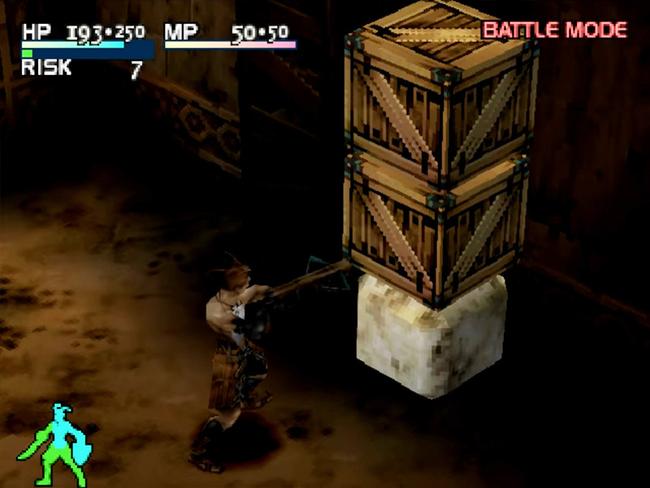
As the environment director, he nevertheless had stories to tell, although a number of players might have overlooked them. Indeed, he is the one who gave names to each of the Leá Monde areas, whose enigmatic nature in the localized versions mostly comes from the fact that translators had to shorten them for lack of on-screen space. For example, the place called “Traces of Invasion Past” in the City Walls North is actually called “The room where traces of the barbarian assault remain” in its original language, giving a much clearer picture as to what might have happened there! In Maehiro’s mind, reading the titles in order during traversal tells the story of a young squire who, battle after battle, walks the path of knighthood.
Is it an unnecessary flavor, when the game already exhibits a full-fledged plot? Certainly not! This attention to detail — a distinctive feature of Matsuno’s team — results in an unsuspected richness that the hurried player would be oblivious to, but that the enthusiast will absolutely enjoy. In Final Fantasy Tactics already, Maehiro himself wrote a number of these background texts, among which are item descriptions. A few years later, Final Fantasy XII would inherit this vision.
The PlayOnline Era
Admittedly, not all projects lend themselves to such underlying richness, especially when they're not games. Released in Japan in February 2000, Vagrant Story was one of the last games from Square’s golden age. Shortly afterward, most of the studio’s workforce focused on the upcoming Final Fantasy titles as well as PlayOnline. Envisioned as Square’s very own hub on the Internet, PlayOnline was not only going to centralize the publisher’s upcoming online games, among which was Final Fantasy XI, but also feature a number of services such as music streaming, manga, sports news, and so on. It was the centerpiece of a new multimedia strategy that can nowadays be deemed as too much, too soon - but to some degree, ahead of its time.
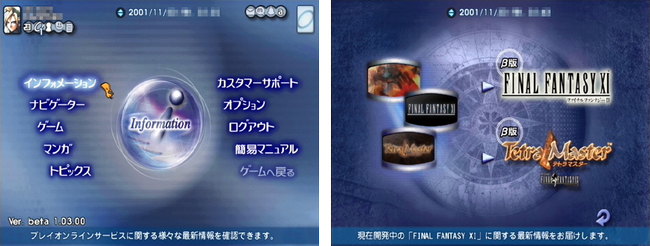
Started in the middle of the year 2000, PlayOnline’s development was mostly handled by ex-members of the Final Fantasy Tactics and Vagrant Story team, headed by none other than Yasumi Matsuno and programmer Taku Murata. Kazutoyo Maehiro was appointed as lead planner — except this time, it absolutely wasn’t about making a game, but designing a large-scale interface that is user-friendly instead of fun.
But PlayOnline was a risky business. Combined with the Final Fantasy movie’s overly-expensive making, it plunged Square into a precarious financial situation that prompted several executives to resign, Sakaguchi himself included. As months went by, the online platform’s ambitions were scaled down, turning it into nothing more than a launcher for FF11 and the Tetra Master minigame, with the accompanying messaging service. It was as the PlayOnline and FF11 beta tests started in December 2001 that Maehiro was removed from the project to join another, much more impressive one.
Breaking the Mould with Final Fantasy XII
Breaking the barriers
Kazutoyo Maehiro joined the Final Fantasy XII team while the project had been in gestation for about a year. Directed by Yasumi Matsuno and Hiroyuki Ito, who joined forces again following their fruitful collaboration on FF Tactics, the game was originally going to be in line with the series’ tradition: an RPG with clear-cut transitions between exploration and combat. Yet, the developers felt that the formula was wearing out, especially because of the constant loading times it induces.
From the get-go, Maehiro went on to work with Matsuno and Ito on a radical change: a new, seamless system that would eventually be called Active Dimension Battle (ADB), a nod to the Active Time Battle that Ito had created ten years earlier. This ambitious attempt, however, would turn into a serious headache for the entire team—mostly in technical terms due to the PlayStation 2’s limited memory—and play a major role in the game’s overly long development period. Maehiro himself later admitted that he was frequently in doubt and had to remind himself that their approach was the right one.
Many players thought this disruption was inspired by Final Fantasy XI, which—being an MMORPG—was the first to do away with the transition between exploration and combat. While true to an extent, Maehiro clarified that FF11 was mainly proof that another way was possible. In other words, it demonstrated that - depending on the style of gameplay they wanted to offer - nothing prevented them from getting rid of a long-lasting tradition. In the FF12 Battle Ultimania official guide, Maehiro justified himself as such: “Although we ended up choosing a game style that was similar to FF11, it wasn’t the basis for this system. It was simply one of the reasons that led us to adopt the ADB system.”

Still, it is undeniable that a number of the team’s inspirations came straight from the previous title. Hiroyuki Ito admitted that the gambit system (a set of predefined instructions that automate character actions) was specifically designed to recreate the feel of online battles alongside real players. The system went through numerous iterations before reaching its final state.
Kazutoyo Maehiro revealed that neutral NPCs roaming the battlefield, characterized by their green HP gauge, are directly based on his own experience: “When I started playing FF11, I was really happy when a stranger cast a support spell on me. As a result, I thought that the ADB should incorporate such a feature.” As for rare monsters, their somewhat opaque spawn patterns are a deliberate choice by Maehiro to encourage players to exchange their findings on online forums. An offline game can still make use of the Internet, after all!
It is unfortunate that such a thorough battle system—that the Japanese International Edition further improved upon—was never inherited by another title in the series. A regret shared by the developers themselves, Ito included, after so many years of hard work.
The soul of Matsuno’s games
In light of this, one could easily imagine that the monster hunting quests also derive from the MMORPG formula. Still, Yasumi Matsuno’s team had already created similar concepts in the past, be it Final Fantasy Tactics’ errands or Tactics Advance’s clan missions. As such, Maehiro quite naturally found himself supervising FF12’s rendition of the same system, and it is no surprise that some of the fights it includes are among his favorites in the entire game.
Furthermore, such a rich ecosystem would lack in flavor if it didn’t feature extensive amounts of text to fit it within Ivalice’s lore. Most of this literature can be found in the game’s Hunts and Bestiary menus, whose richness is almost unrivaled in the series. Maehiro handed the writing over to a fresh recruit from the battle team, Genki Yamashita, who had previously impressed him with an adventure game proposal he submitted when applying for a job at Square. Due to the game’s large number of enemies, it was nevertheless a daunting task for a newcomer like him!
Thanks to its seamless battle system and bountiful contents, Final Fantasy XII inspires a dazzling sense of freedom that, for instance, results in the ability to venture into high-level areas at an early stage... at the risk of misfortune. For a number of players, however, this also translated into a sparse storyline.

Although controversial, it was a conscious choice from the team—Maehiro included. He explained: “When playing recent games, I am under the impression that most of them are forcing me to follow the story. In the past, I think the most interesting titles were the ones that let players enjoy the story at their own pace. For example, when you stepped into uncharted territory and spotted a monster you didn’t know, you would have to ask yourself ‘How strong is this thing? Can I defeat it?’ before moving forward. [...] By choosing a seamless battle system, my idea was to go back to these old games.”
As was already outlined in Vagrant Story, this is what best describes the soul of Matsuno’s games: an obvious passion for old-school video games that, although less easily accessible, were at the same time more rewarding for persistent players. “I personally like difficult games, which I think showed through during the making of this game,” Maehiro unsurprisingly revealed—a taste that certainly inspired FF12’s numerous high-level boss fights.
This stance is also a departure from the titles produced by Yoshinori Kitase, Final Fantasy X especially, that are characterized by their linear narratives and flashy graphics. However, their influence on the overall image of 'what a Final Fantasy game should be' forced the FF12 team to integrate more “frivolous” elements, even though they can be seen as clashing with the geopolitical intrigue. While the game’s hero was originally going to be Basch, it was eventually changed to Vaan—an unremarkable young man who, along with his girlfriend Penelo, is somehow uninvolved with Ivalice’s upheavals. Still, although the game’s reception was initially mixed, FF12 nowadays lives on in the series’ heritage as a certain vision of Final Fantasy. One that FF16 might build upon...
Feedback-led Experimentation
When Final Fantasy XII was released in Japan, in March 2006, the next generation had already started, with the Xbox 360 out only a few months before and the PlayStation 3 slated for the holiday season. In other words, it was high time for Square Enix to enter the fray—and this is one of the reasons why the thirteenth entry in the series, previously developed for the PS2 by Kitase’s team, was fully transferred to the PS3. But while the game’s dedicated engine (the soon-to-be-called Crystal Tools) mobilized most of the publisher’s skilled programmers, the other teams were left with limited resources. As such, apart from Final Fantasy XIII, only one major in-house console game emerged: The Last Remnant.
This game was a real paradigm shift for Square Enix. On the one hand, it was a brand new IP, especially targeted at the Western audience—a smart move, as the industry’s epicenter was slowly but surely moving from the East to the West. On the other hand, it was developed using third-party technology (Epic Games’ Unreal Engine 3), a drastic departure from the company’s tradition of crafting its own toolkit for each game. This choice brought about a number of complications due to conflicting work cultures between Western and Japanese developers.
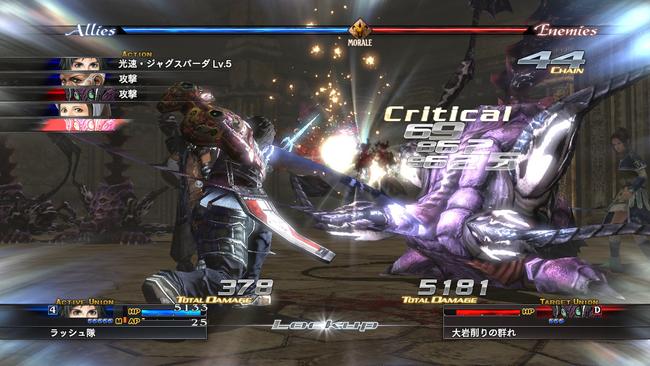
Helmed by Akitoshi Kawazu, the mastermind behind the SaGa series and FF12’s substitute executive producer after Matsuno left the project, The Last Remnant was created by a composite team of veterans who worked on his previous titles. Among them were director Hiroshi Takai (battle director on Romancing SaGa: Minstrel Song), game designer Kazuhiro Kataoka (lead map system designer on FF12) and... Kazutoyo Maehiro, who was quite naturally appointed battle director, following his work on FF12.
However, because the latter was controversial, this new task was certainly daunting for Maehiro. “I nearly got beaten up for Final Fantasy 12,” he joked during an interview with VideoGamer. The Last Remnant’s new system was therefore built by taking player feedback into consideration, which is probably the reason why it reestablished the non-seamless, turn-based tradition. But not without a twist. Indeed, it did walk in FF12’s footsteps by letting the player control a squad, and not each character individually, and engage in large-scale battles against enemy troops—a decision motivated by the game’s war backdrop. This also explains the adoption of the morale system.
Still, the experience they acquired in their previous game was not enough. “We went through a lot of trial and error to find how to easily manage a group of characters,” Maehiro wrote on the official blog. “It’s all part of my job, but it’s difficult every time.” On a lighter note, he justified the return to a turn-based system by saying that, because he was not so young anymore, his fingers don’t move as fast as they used to. Joke aside, this also allowed for a more strategic approach to combat.
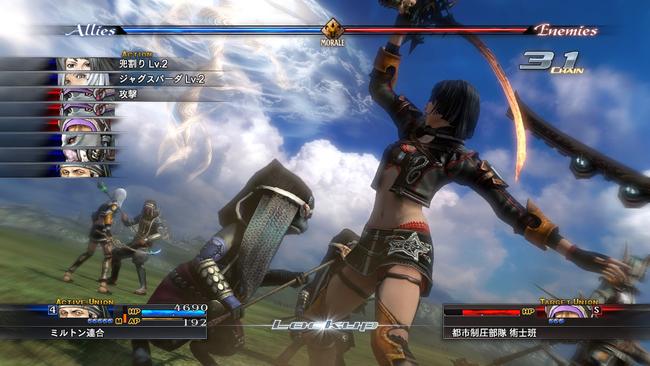
Launched on Xbox 360 in November 2008, The Last Remnant was ported to PC a few months later. But instead of providing the exact same content, as is usually the case, the PC version of the game included many alterations and additions, and the development team was allowed to freely change and supplement the game as much as they wanted to—within the allocated time, of course. Because of this, the most dedicated players may have noticed a new Arcana art called Crimson Flare. When, in 2018, Japanese website Gamer asked Hiroshi Takai and art director Yusuke Naora about this unexpected addition, they were caught off-guard, prompting Naora to confess: “It sounds like Maehiro alright...” The latter seems to make a habit of such mysteries!
Who knows what Maehiro would have added to the PlayStation 3 of the game if it hadn’t been canceled? When the Square Enix management understood this port would necessitate extra time and workforce, it took the decision to postpone it indefinitely, as the developers were desperately needed on a number of other projects. Among them was a new title that was precisely about to enlist some of the minds behind The Last Remnant...
The Action Game That Never Was
The Last Remnant’s lukewarm reception didn’t discourage Square Enix from targeting the worldwide market with original IPs. In late 2009, a game designer whose name was still unknown to the larger audience, Naoki Yoshida, was removed from the Dragon Quest X team to direct a brand new project. His goal was to create an action game powered by the Unreal Engine, featuring challenging gameplay elements and gothic fantasy visuals with futuristic touches - a description certainly reminiscent of a very popular series from another publisher... Indeed, years later, Yoshida compared the soon-to-be-canceled game to Bloodborne, obviously bitter that he couldn’t have a head start on From Software’s hit title.
Although the team included The Last Remnant veterans such as Hiroshi Takai, Yoshida took advantage of the opportunity to realize a personal dream. A long-time admirer of Yasumi Matsuno’s works, he requested the help of several of his fellow travelers, among which were Hiroshi Minagawa and Kazutoyo Maehiro. They would even be joined by artist Akihiko Yoshida later on in the project. Still, despite this all-star cast, development progressed slowly and, about a year later, it came to a brutal stop when Yoshida was asked to take over Final Fantasy XIV’s lead following the game’s disastrous September 2010 launch.
While the action title did remain in the publisher’s schedule for some time, it was eventually shelved, probably because its lead designers were transferred to FF14’s team as well. It was however resurrected a while later at the instigation of producer Ryutaro Ichimura (Dragon Quest IX), who turned it into an Action-RPG title set in a world inspired by medieval and modern Europe. Following a number of changes, the console versions were canceled, and the game was released only for Apple platforms in July 2013 under the name Bloodmasque, but it was met with much indifference.

Kazutoyo Maehiro’s exact involvement in the project was never clarified. Yet, it is most likely his writing skills rather than his legacy as a battle designer that made Naoki Yoshida summon him. While reflecting on the project a few years later, the latter pointed out that the plot was sketched out before anything else by bringing “one of the company’s well-known writers”—but not mentioning who it was. Maehiro was still included in Bloodmasque’s credits under the pretty vague title of “Story”. According to Ryutaro Ichimura, the game’s background follows a detailed “bible” that tells a 2000-year-long alternate history where vampires took over the world.
Unfortunately, because of the game’s hindered birth and the lack of publicity that accompanied Bloodmasque’s final launch, few details have emerged. The final act came in December 2014, when the game was put offline indefinitely, making it unplayable.
Rescuing the Realm
Now in charge of the story
Initially undertaken to correct the game’s flaws, Final Fantasy XIV’s rescue operation changed scale when it became obvious that the foundations were insufficient to carry forward the MMORPG over time. And so, in addition to updating the live version (or “1.0”), Square Enix started building a completely new title from the ground up—version 2.0, or A Realm Reborn, as it would eventually be called. Handling two games at once was a massive undertaking that required many hands, and while the team behind version 1.0 remained on board for some time, a number of new figures joined the reboot project, especially in the story and lore sections.

Removed from the canceled action title to help with FF14 2.0, Kazutoyo Maehiro first joined the user interface section. A rather surprising appointment, considering he had never distinguished himself in that field before. But it was only temporary. As Maehiro himself said during a live letter in 2014: “Naoki Yoshida hit me on the shoulder, and before I knew it, I was in the charge of the scenario.” He took over from Yaeko Sato, a FF11 veteran who was working on FF14 since the very beginning and left the team after completing the 1.x series of patches. Similarly, on the lore front, Kenichi Iwao was replaced by newcomer Banri Oda.
By choosing Maehiro, Yoshida was not only hoping to realize their previously aborted collaboration, but also—and above all—to call forth “the soul of Matsuno’s games”. As if it wasn’t already obvious, Maehiro commented during the same live letter: “I love to read, and I read works from a lot of different authors, but I’d say the number one influence on my work is game designer Yasumi Matsuno. For more than half of my career I’ve worked with Matsuno. Originally, I was actually in charge of battle systems, but he was a huge influence for writing dialogue and game scenarios.”
When Maehiro took up his position, FF14’s new storyline was merely a basic plot. This situation would not change until halfway into the development process because, due to the emergency status of the project, Naoki Yoshida decided that the basics of the game design and technology needed to be solidified before moving into mass production—text included. Progression through the game was nothing more than a straight line, and the actual events were not yet fleshed out. Such a passionless method can easily explain A Realm Reborn’s slow and linear storytelling, but lack of time made it a necessary compromise.
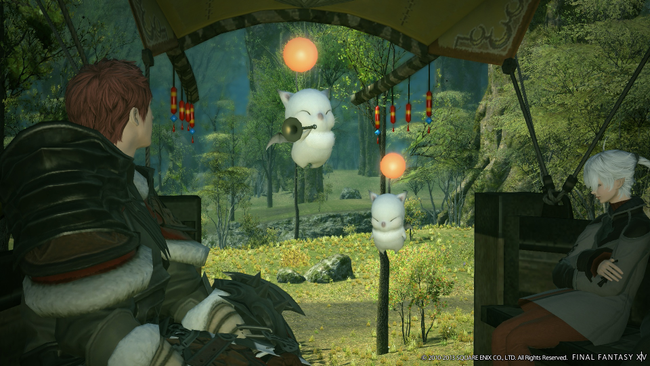
Surprisingly, for Maehiro, the writing of FF14 2.0 was closer to the preparation of a direct sequel than of a reboot, mostly because one of his very first tasks was to immerse himself in everything that was written for the game up to that point. He described his process in a message published on the official website in 2014: “I scrambled to read up on the voluminous background premise documents, and thus began the days devoted to building a story for A Realm Reborn—expanding and completing premises that were left undefined in FF14 1.0, adding new premises and characters.”
He could nevertheless enjoy a certain amount of freedom, which unsurprisingly translated into a return to the roots of the series: “My generation’s idea of Final Fantasy are crystals that pervade the world and a hero’s voyage somehow linked to those. [...] One axis was the "Crystal," which has unfortunately been given short shrift in recent titles. All the more reason, then, to set a crystal story at the center of A Realm Reborn.” As such, players could gaze upon the most impressive of these sacred stones: Hydaelyn, the Mothercrystal herself.
More than just a writer
Kazutoyo Maehiro’s role as the lead scenario writer is to consult with Yoshida in order to define the main story’s themes, events, and characters, as well as side quests. Under his command is a team of more than a dozen writers. Filling up an MMORPG with enough text indeed requires a lot of hands! During A Realm Reborn’s development, all contents related to quests and event planning were also overseen by Kazuya Niino, Yoshida’s assistant director, who was hired by Square Enix in late 2011. But when Niino was given a directional role on Dragon Quest Builders in early 2014, he handed over all of his duties to Maehiro, making him FF14’s key figure for anything story-related.
His role, however, spanned more than just writing. In an interview with Famitsu alongside composer Masayoshi Soken, in 2016, he even went as far as to say: “In terms of ratio, scenario writing actually doesn’t constitute much of my work. (laughs)” As was the case with his previous projects, he insists on never losing sight of the big picture. According to him, writing is not only a way to tell a story, but also to help players get their bearings as they make their first steps into the game. For example, each new content is introduced with a short quest in order to tie it within the lore. This attention to detail goes as far as to lay out quest-related NPCs in such a way that they are facing the player’s direction as they are moving their way.
Within the main story, this resulted in the constant promotion of the player as an integral part of the plot. Maehiro explained: “The hero of an RPG is a personal avatar, controlled by the player. This means that an RPG hero must also be at the center of the story, never a mere spectator of history. The story only works because the hero is there, and NPCs come to life thanks to the hero’s presence.”
This notion abundantly transpires in FF14, where the player is constantly reminded of their status as the Warrior of Light by other characters—so much so that their reputation precedes them! This is one of the main reasons why the game’s story is much closer to a single-player RPG than most MMORPGs, something Heavensward would build upon.
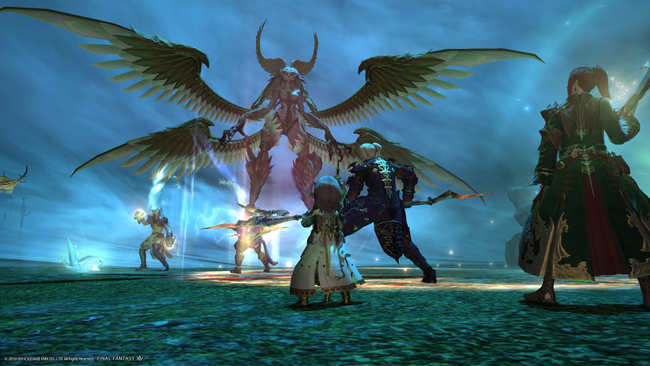
One last element is crucial to help the player feel at home: a deep and consistent lore. This component has been inscribed in FF14’s DNA ever since version 1.0, when Eorzea’s socio-cultural framework was handcrafted by Kenichi Iwao even before scenario writer Yaeko Sato got to work. This approach persisted through A Realm Reborn’s creation, this time with Banri Oda and Kazutoyo Maehiro, but the story seemingly took precedence over the lore, the latter being used to add depth and credibility to the characters, places, and institutions required to move the player’s adventure forward. In return, Oda also acted as a proofreader to ensure all texts are consistent with the lore.
In a group interview published in 2018 on the Final Fantasy portal site, Maehiro detailed the importance of having a believable world: “When you first go to a new place, you have to feel like everything belongs there. As soon as something seems out of place, it takes you out of the experience, and you’re no longer a Warrior of Light, you’re just a character in a video game.” Density, however, is a double-edged sword, which is why the FF14 team avoids burying players under a stack of stodgy details. This sometimes forces them to delete scenes or communicate lesser tidbits through side quests.
Maehiro’s last noteworthy task was to centralize all music requests from the team’s different sections and forward them to Masayoshi Soken. In Famitsu, Soken commented on their work together: “Maehiro clearly indicates the important parts. He also prepares reference songs, which makes it easier to get a clear image of what he’s looking for.”

As an example, the request for Leviathan’s battle music mentioned Metallica’s “Master of Puppets”! One notable exception to Maehiro’s clarity was the Bismarck battle from Heavensward, for which he wanted a piece both “violent” and “refreshing”—a somewhat paradoxical request, that left Soken perplexed.
Maehiro is especially fond of old video game music, praising the level of quality composers were able to achieve under strict technical limitations. As such, when creating games, he holds the soundtrack in high regard. He said in Famitsu: “I see video games as a total work of art, that unites game design, music, and visuals into a coherent whole. Among these elements, I think music is special. I can still remember the music from games I played five or ten years ago. For example, you can still hum the boss battle themes from the FF series, right?” To him, however, recent video game soundtracks tend to be less memorable than their older counterparts... Not including FF14, of course.
Ivalice lives on
It shouldn’t come as a surprise that Kazutoyo Maehiro was responsible for injecting a number of elements from FF12 into the lore of FF14. Starting with A Realm Reborn, he added a brief reference to the nation of Dalmasca during a discussion between two imperial soldiers, at a time when this part of the world was not yet clearly defined. As for the Ascians, a group of primal beings that pull the strings in the shadows, it would be easy to equate them with the Occurias. However, their names—or, should we say, “titles”—are all borrowed from the Scions of Light, mysterious entities opposite to the Espers (FF12’s summoned creatures). Speaking of Espers, the most powerful of them, Zodiark, was also used to create the Ascians’ dark deity.
Is everything connected, then? Not at all, Maehiro swore during a live letter from the producer in 2014: “To be absolutely clear, there is no direct connection between FF14’s Hydaelyn and FF12’s Ivalice or even FF11’s Vana’diel. They are not the same world in different dimensions or time—they are their own separate worlds.” Their goal is to weave each and every borrowed element directly into the world of FF14, a philosophy set by Naoki Yoshida with the goal to turn the MMORPG into a theme park of the Final Fantasy series. It is, however, nothing more than an alluring gloss, meant to pique the fans’ curiosity. Fortunately, behind the most obvious references lie more esoteric allusions.
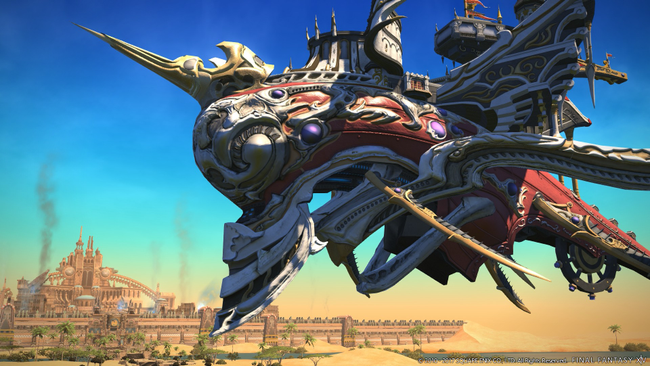
Yoshida fulfilled his long-lasting dream of working with Yasumi Matsuno himself in FF14’s second expansion pack, Stormblood, when the famous creator was tasked with directing the Return to Ivalice raid series. Drawing from the stories of FF Tactics and FF12, he fleshed out a whole new part of the FF14 world, which is none other than... the Kingdom of Dalmasca that Maehiro introduced a few years before!
Matsuno also used the opportunity to give some necessary attention to one anecdotal character from an old quest: Drest, a Dalmascan refugee who took shelter in Eastern La Noscea. Left to his torment since A Realm Reborn, the poor man is finally given salvation during a colorful side quest in which Matsuno also expresses his love for good wine. In a Dengeki Online interview from 2019, he joked: “I folded the cloth that Maehiro unfolded.” It wouldn’t be unfair to say that the numerous nods to FF12 within FF14 cultivated the players’ fondness for what was long regarded as an unpopular entry in the series, making 2017’s The Zodiac Age remaster an even bigger event.
As an added bonus, anyone who follows Yasumi Matsuno’s Twitter account also has the chance to get a glimpse of the two creators’ playful friendship. In 2013, when someone pointed out to Matsuno that his former colleague was now A Realm Reborn’s lead scenario writer, he joked: “Have your Japanese skills improved, Maehiro? lol”. Two years later, shortly after FF14’s 2.55 update, he called him out: “What have you done to our idol?!”—probably referring to Minfilia’s fate. As a result, he started the “Maehiro is mean” hashtag, which some Japanese players would later pick up to express their feelings after that tragic scene from Heavensward...
Do not let that banter fool you, though, as he indeed admires Maehiro’s work. In late 2021, when Hironobu Sakaguchi started binge-playing FF14 and was marveling at the quality of Heavensward’s storyline on Twitter, Matsuno answered: “It was at that moment that Kazutoyo Maehiro’s name was etched into Mr. Sakaguchi’s mind...” A very noteworthy acknowledgment—even if, to be on the safe side, he added: “I don’t know, actually”.
Heading Heavensward

A sound footing, finally
Development of FF14’s first major updates began immediately after A Realm Reborn’s mad dash, and the team would not soon be able to rest. However, a new goal was coming into view: the game’s very first expansion pack, Heavensward. Now that the title was relying on solid foundations, Yoshida and his team leaders were finally able to carry the storyline in a direction that suited them better.
In 2018, Maehiro explained: “After launching A Realm Reborn as a standalone game, we started working on Heavensward while we were still in the middle of making the post-launch patches. As a result, we built up all kinds of useful skills and experience, like how to structure the main scenario, and how to put together the job quests and side quests, so we now have a basic format in place that we can use in the future.”
Thanks to this newfound stability, the main story was given more importance than in A Realm Reborn. After Naoki Yoshida announced the core concepts for the expansion (namely: a story told like a journey, the ability to fly, and a dark fantasy setting), it was Maehiro who started outlining the plot, areas, quest progression and story pacing, then developing each location’s narrative context. He was the one who decided that Heavensward would feature one large city and six regions to explore—a structure that would be kept in the next expansions, albeit with the addition of a secondary town.
For many players, Heavensward was the start of FF14 at its peak, providing a thrilling adventure that plays like any “normal” RPG, with memorable characters and high-quality writing. It also goes back to a more traditional fantasy taste, telling the tale of the age-old war between humans and dragons. As to why the story features seven primal wyrms, no less, Maehiro gave a rather unexpected justification: “Well, when you’re talking dragons, it has to be seven! I mean, look at Dragon Ball.” The writing team would nevertheless need several years to properly introduce each of them, all the way to Endwalker and beyond, when Vrtra and Azdaja finally entered the stage.
The adoption of a gloomy mood in Heavensward, however, is not a surprising move from Yoshida and his team. If they very early on decided to set the story in Ishgard and Eorzea’s northern lands, it is most likely to give the game a darker turn, with obvious gothic inspirations that revived the worldview they were planning to feature in their canceled action title.
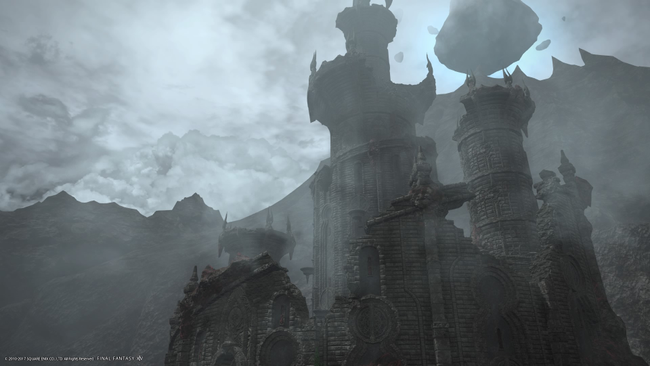
Although Ishgard was present in FF14 since the release of version 1.0 (it was possible to gaze at its towering architecture by visiting the Coerthas region), its actual context was not well developed when they started working on Heavensward. Maehiro and Oda therefore needed to fully focus their attention on fleshing out this much-awaited location, as the former described: “There was a bit of text about it, but that was it. Nothing had been fixed as to what sort of nation it was, or what it looked like. [...] We thought we should make it a place that really expanded the world of FF14.” The tone is set from the very first minutes of the expansion, when the black and imposing city emerges from the biting snow...
Although the Warrior of Light is still very much the center of attention, the small group of characters that escorts them in their journey was slowly but surely earning some attention from players, if not love. As such, the tragic death of one of these characters certainly was a turning point in the community’s emotional attachment with FF14. When asked by the Final Fantasy portal site if he had anticipated such heated reactions, Maehiro answered: “If I’d seen it coming, maybe I wouldn’t have received as many angry letters that made me fear for my life! (laughs)” As angry as the ones he got because of FF12’s battle system? In any case, this unique bond between the players and their favorite characters would only strengthen afterwards—another testament to the game’s success.
Sowing the seeds for the Future
In 2015, when the Final Fantasy XVI project kicked off within Yoshida’s department (Business Division 5, as it was then called), a few prominent developers were removed from FF14 to start working on the new game, and Kazutoyo Maehiro was one of them. Following the release of Heavensward, he was only credited as a supervisor for FF14—at least while the game’s next expansion was being developed, his official title being “scenario section manager”. When Business Division 5 was transformed into Creative Business Unit III, in 2019, he was appointed “game design section director”. At the time, though, he had entirely moved to FF16.
His duties as scenario director were therefore transferred to Banri Oda—in addition to his work as lore writer—and Natsuko Ishikawa, who previously wrote some job quests (the Rogue and Dark Knight) and side contents (such as the Coil of Bahamut and Crystal Tower). Initially, Oda was entrusted with the odd-numbered updates (3.1, 3.3, 3.5), with Ishikawa taking care of the even-numbered ones (3.2, 3.4).
However, during a live letter from the producer in June 2016, Ishikawa clarified that the basic plot for the 3.x series was still established by Yoshida and Maehiro, adding that the latter was her immediate superior. On that occasion, she described him as such: “He’s usually a normal guy, but as soon as he enters work mode, he can be quite scary. After not eating anything for two days, he would suddenly start eating the same type of food in huge quantities.”
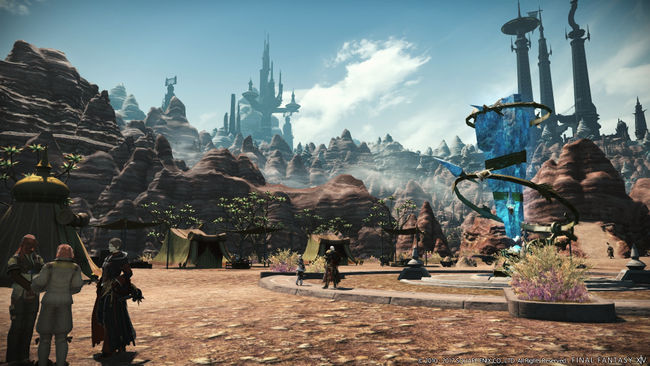
Afterward, the new duo focused on the game’s next expansion pack, Stormblood, where Oda was in charge of the Ala Mhigo side of the storyline, while Ishikawa handled the Othard side. Yet, due to his supervising duties, Maehiro still has a hand in the game from time to time. Notably, while the team was preparing the Return to Ivalice raid series, they ended up asking him to handpick a number of pieces from the Final Fantasy Tactics and FF12 soundtracks, purely and simply because he worked on the original titles.
But that’s not all. Before moving away from FF14, Maehiro dropped a bomb that would, years later, have a critical influence on the game’s storyline. As development on Heavensward was wrapping up, he felt the ending was a bit lacking in terms of impact, and he declared that he needed to add one final, cliffhanger scene—if only to lay the foundations for future stories. And to do so, how about introducing... the Warriors of Darkness?
After receiving Yoshida’s approval, Maehiro tasked Banri Oda with knotting these mysterious antiheroes into the lore—which he did, picturing them as adventurers from the First. The result is a memorable scene where Elidibus welcomes Ardbert on the Moon, no less, thus sowing the seeds for the spectacular Shadowbringers expansion. Good call!
A master of pranks
Kazutoyo Maehiro also distinguished himself in another domain: Final Fantasy XIV parody videos. Players discovered this unexpected talent in March 2014, during a live letter from the producer, when he revealed a Super Nintendo-style demake of Titan battle (extreme mode). The goal was to introduce himself in an innovative way, letting people know he is more than just a scenario writer. Indeed, the 2D graphics were solely created by him after ten days of night work. The only help he received was from Masayoshi Soken, who was so impressed with the video that he decided to produce a retro remix of the boss song to accompany it.
The following year, Maehiro returned with another fake title: Ultimate Fight Final Fantasy XIV, a fighting game inspired by Iron Galaxy’s Divekick (which was published by Square Enix in Japan). The video shows Yda and Livia clashing in Mor Dhona, complete with a spectacular Limit Break where the other Scions of the Seventh Dawn lend a hand. While Maehiro decided to not imply any additional cost for the Titan demake, this new joke was on another level, requiring two months of work, with the help of the FF14 animation team.
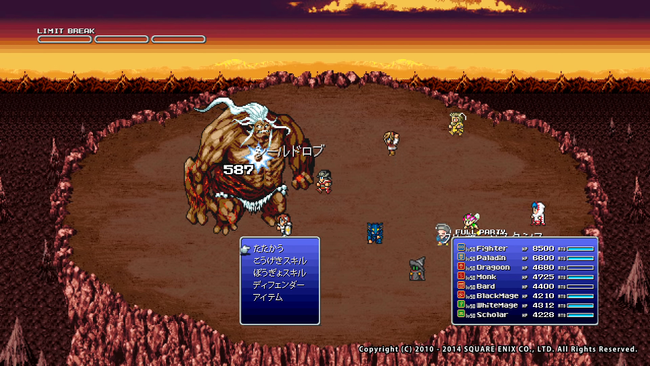
When the end result was introduced during a public live letter, in April 2015, Maehiro went as far as to ask Naoki Yoshida to let him develop an actual, playable version of Ultimate Fight, adding he would only need seven months and 60 million yen (around $500,000). The producer and director turned him down bluntly, adding: “The Limit Break’s balance is garbage!”
Two months later, in June 2015, Maehiro came back to more humble endeavors with a short pixel art movie showing “Biggs and Wedge simply running” (a literal translation of the title), as a means to celebrate the imminent launch of Heavensward. Moving away from the FF14 project didn’t discourage him from making even more parody videos, such as 2016’s Tataru no Boken (Tataru’s adventure), a faithful imitation of the early Final Fantasy games, and 2017’s Tactics Alexander, an April Fool paying homage to Tactics Ogre—a proof that Maehiro fully integrated the game’s legacy, even if he didn’t actually work on it.
His most impressive feat, however, is certainly the video he produced for 2018’s April Fool: Magnai Fantasy, inspired by the Oronir’s unlucky love stories as seen in Stormblood... But, first and foremost, it is an incredible tribute to Square Enix’s antique catalog of games. From Final Fantasy to Secret of Mana through Actraiser, Square’s Tom Sawyer and the Ogre series, everything is recreated with the utmost care and attention to detail. It even features a brief demake of The Last Remnant, as well as a playful nod to the 2013 E3 trailer that bombastically revealed Versus XIII’s name change to Final Fantasy XV.
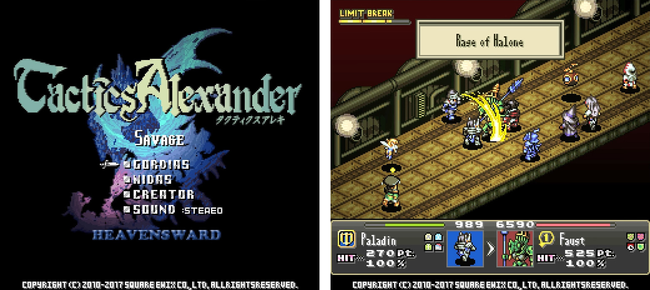
Everything is set to music by his partner in crime, Soken—who is also always up for a good joke, especially if he can share it with fans on Twitter. For example, he teased the reveal of Tataru’s game when, in June 2016, he tweeted: “I’ve captured Maehiro’s screen while he was running away from reality after missing a treasure in the Aquapolis because of a careless mistake.” In December 2019, he was at it again: “I’ve obtained a new picture from the 5.15 update on Maehiro’s computer while he was using the bathroom.” The takeaway is: never leave your desk without locking your computer...
To the Future: Final Fantasy XVI
Carried by FF14’s unhoped for recovery and Heavensward’s acclaimed launch, Naoki Yoshida became Square Enix’s new key figure. While Hajime Tabata’s team was hard at work on FF15 and Yoshinori Kitase had just lifted the veil of the Final Fantasy VII Remake project, Yoshida's department was offered the opportunity to develop Final Fantasy XVI as early as 2015. While Yoshida accepted the offer, he was nevertheless bound to FF14 and couldn’t resolve to assume directorial duties for both titles simultaneously.
In order to bring the project to fruition, he decided to assume the role of producer, while surrounding himself with a few trustworthy people from the FF14 team that had just completed their work on Heavensward: director Hiroshi Takai, character designer Kazuya Takahashi, battle designer Mitsutoshi Gondai... and Kazutoyo Maehiro as lead scenario writer and global game designer.
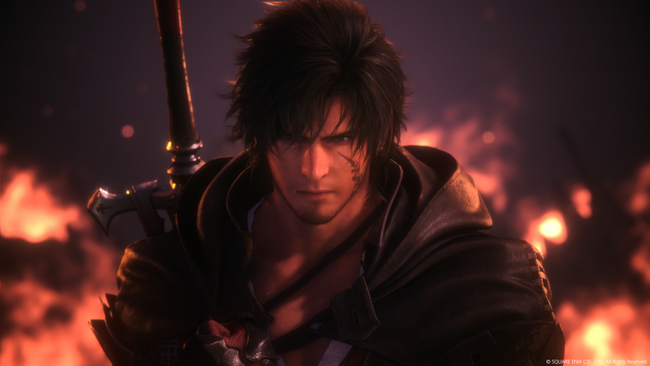
For a significant amount of time, the game was only incubated by a small group of developers in order to flesh it out, probably experiencing a number of changes in formula before mass production eventually started in 2019, with a greatly expanded development team. It was also at that time that the company hired former Capcom game designer Ryota Suzuki, entrusting him with the mission to oversee the game’s action-packed battle system.
As already illustrated by the gritty, bloody scenes from the very first trailer, FF16’s tale is obviously darker than its predecessor—a realization of Yoshida, Takai, and Maehiro’s taste for dark and violent fantasy. Although this vision has been very popular lately thanks to games such as The Witcher 3 or the Game of Thrones series, this is actually a deep-rooted inclination from them, owing to Kentaro Miura’s legendary manga Berserk as much as to their favorite Western role-playing games. Of course, one cannot understate the influence of Matsuno’s titles, if only for the dramatic geopolitical intrigue—something Maehiro experienced firsthand.
It is equally tempting to interpret this as a “revenge” for their canceled extreme action title, although the Final Fantasy framework is certainly more limiting than a completely new IP, partly because of fan expectations. Yoshida nevertheless insisted on creating an adult entry, targeted at fans who grew up with the series and have witnessed “the reality of the world”. A bold statement, but one that needs to be backed by solid writing.
Based on what Square Enix has already revealed, FF16’s Valisthea looks like an old, decadent world, afflicted with the still mysterious Blight, and where the power of the crystals has shaped history “for long enough”. This vision of the crystals is quite detached from FF14, where the Mothercrystal is a purely benevolent entity. FF16’s premise is much more reminiscent of FF12 and—first and foremost—The Last Remnant: a world where supernatural beings entrust the weak and unstable humanity with power far beyond their command, thus leading to certain demise.
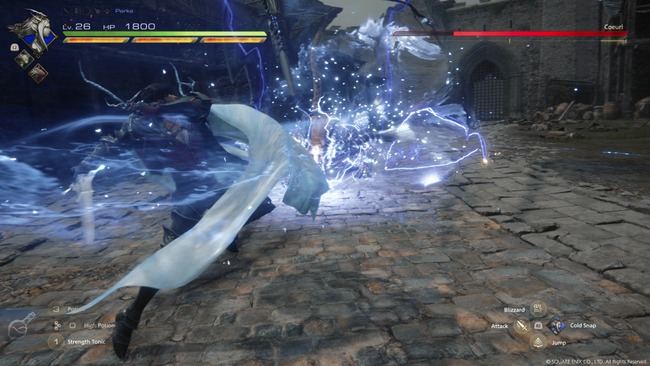
Admittedly, Final Fantasy XVI may look too similar to its inspirations for the time being. Still, having a versatile creator such as Kazutoyo Maehiro at its helm ensures that it has been thought about with extra care and an awareness of the game experience as a whole, thanks to his previous involvement in numerous fields.
With A Realm Reborn and Heavensward, he has demonstrated attention to all the factors that, beyond written words, contribute to the narrative and believability of the world. As Valisthea’s lore already seems fairly extensive, we can only hope it will serve an engrossing storyline. The answer to this questioning now has a date: Summer 2023.
Article author Jérémie Kermarrec is a video game translator. He is also the author of French book 'The Legend of Final Fantasy XV', and the co-author of 'Smile Please: The Biography of Nobuo Uematsu'. He has been a Final Fantasy community stalwart for decades, and owns the French fansite Final Fantasy World.
Kazutoyo Maehiro’s Resume in Full:
- DynamiTracer (1996): Design Assistant
- Final Fantasy Tactics (1997): Planner, Interactive Novel Section
- Vagrant Story (2000): Planner & Director, Background Section
- PlayOnline (2002): Planning Chief
- Final Fantasy Tactics Advance (2003): Quest Planner
- Final Fantasy XII (2006): Battle System Designer
- Final Fantasy Tactics A2: Grimoire of the Rift (2007): Special Thanks
- The Last Remnant (2008): Battle Director
- Bloodmasque (2013): Story
- Final Fantasy XIV A Realm Reborn (2013): Main Scenario Writer
- Final Fantasy XIV Heavensward (2015): Main Scenario Writer & Event Supervisor
- Final Fantasy XIV Stormblood (2017): Development Supervisor
- Final Fantasy XIV Shadowbringers (2019): Special Thanks
- Final Fantasy XVI (2023): Creative Director & Original Screenplay
Sources
- http://shmuplations.com/vagrantstory/
- Vagrant Story Ultimania
- http://www.square-enix.co.jp/games/gba/fft-a/communication/creators/int02.html
- https://www.youtube.com/watch?v=WrfgyQR6mLo
- https://www.youtube.com/watch?v=c-__c2JCuY4
- Final Fantasy XII Battle Ultimania
- https://www.videogamer.com/previews/the-last-remnant-interview/
- http://blog.square-enix.com/remnant/2008/11/_vol8.html
- https://www.gamer.ne.jp/news/201810050001/
- https://app.famitsu.com/20130801_200011/
- https://app.famitsu.com/20130615_177541/
- https://www.4gamer.net/games/199/G019924/20150226137/index_2.html
- https://drive.google.com/file/d/117EBap9Koo2U1EqSPbf7KVeBgg_gdkBd/view
- https://twitter.com/Nino_Kazuya/status/625945592871567360
- https://www.youtube.com/watch?v=YRZ_4H0OK60
- https://forum.square-enix.com/ffxiv/threads/159217
- https://www.finalfantasyxiv.com/anniversary/fr/detail/message.html
- https://www.famitsu.com/news/201603/06100597.html
- https://game.watch.impress.co.jp/docs/news/755894.html
- https://na.finalfantasy.com/topics/30
- https://www.youtube.com/watch?v=VitW_Os8oTY
- https://www.famitsu.com/news/201504/26077555.html
- https://dengekionline.com/elem/000/001/911/1911654/
- https://game.watch.impress.co.jp/docs/interview/1205666.html